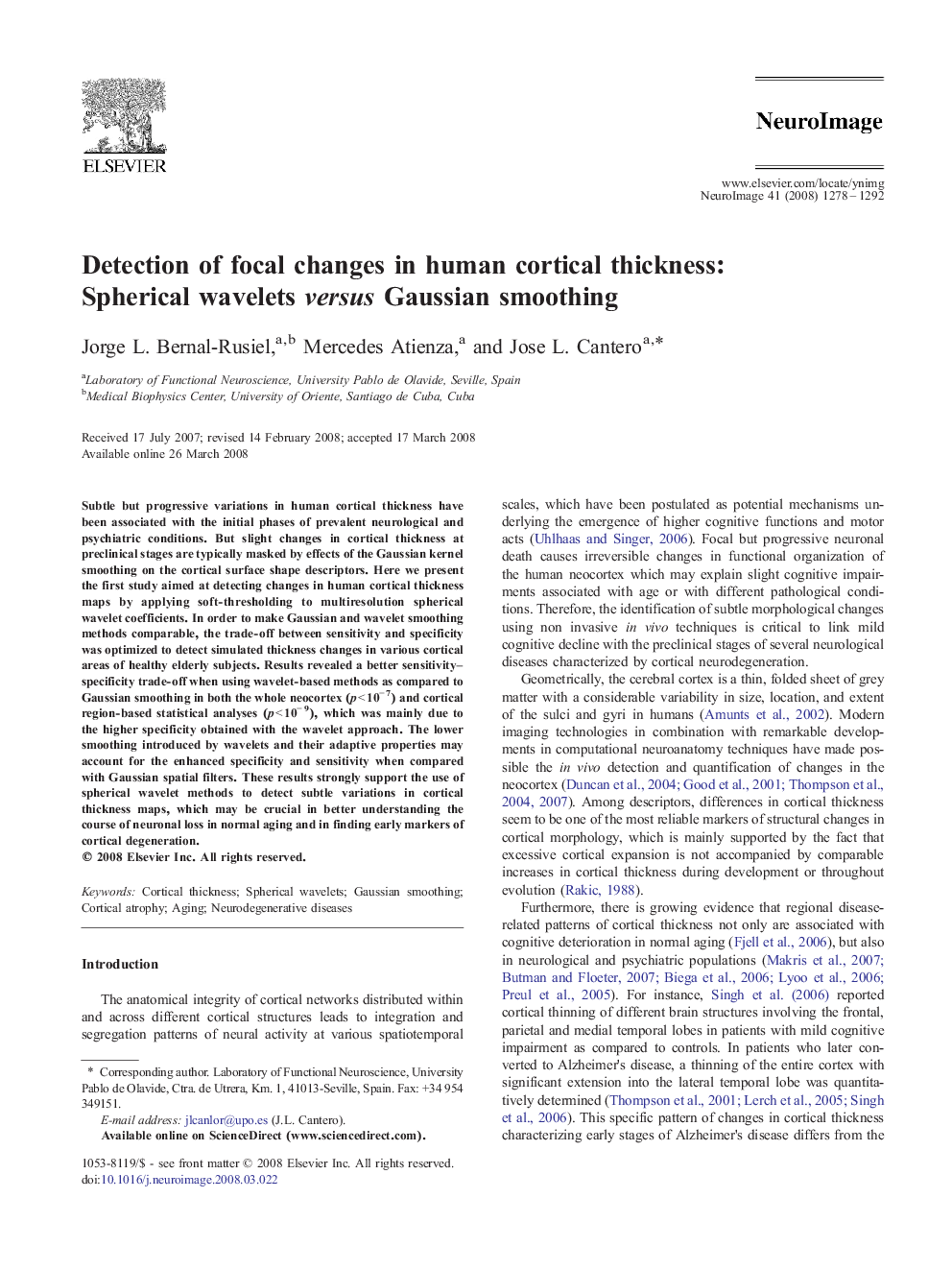| Article ID | Journal | Published Year | Pages | File Type |
|---|---|---|---|---|
| 6038982 | NeuroImage | 2008 | 15 Pages |
Abstract
Subtle but progressive variations in human cortical thickness have been associated with the initial phases of prevalent neurological and psychiatric conditions. But slight changes in cortical thickness at preclinical stages are typically masked by effects of the Gaussian kernel smoothing on the cortical surface shape descriptors. Here we present the first study aimed at detecting changes in human cortical thickness maps by applying soft-thresholding to multiresolution spherical wavelet coefficients. In order to make Gaussian and wavelet smoothing methods comparable, the trade-off between sensitivity and specificity was optimized to detect simulated thickness changes in various cortical areas of healthy elderly subjects. Results revealed a better sensitivity-specificity trade-off when using wavelet-based methods as compared to Gaussian smoothing in both the whole neocortex (p < 10â 7) and cortical region-based statistical analyses (p < 10â 9), which was mainly due to the higher specificity obtained with the wavelet approach. The lower smoothing introduced by wavelets and their adaptive properties may account for the enhanced specificity and sensitivity when compared with Gaussian spatial filters. These results strongly support the use of spherical wavelet methods to detect subtle variations in cortical thickness maps, which may be crucial in better understanding the course of neuronal loss in normal aging and in finding early markers of cortical degeneration.
Keywords
Related Topics
Life Sciences
Neuroscience
Cognitive Neuroscience
Authors
Jorge L. Bernal-Rusiel, Mercedes Atienza, Jose L. Cantero,
